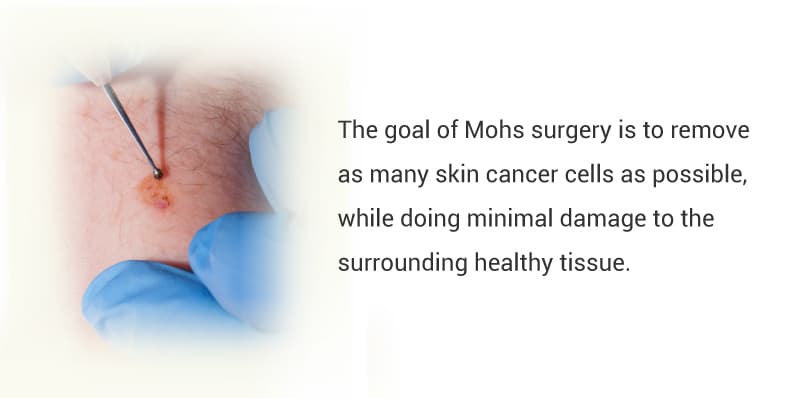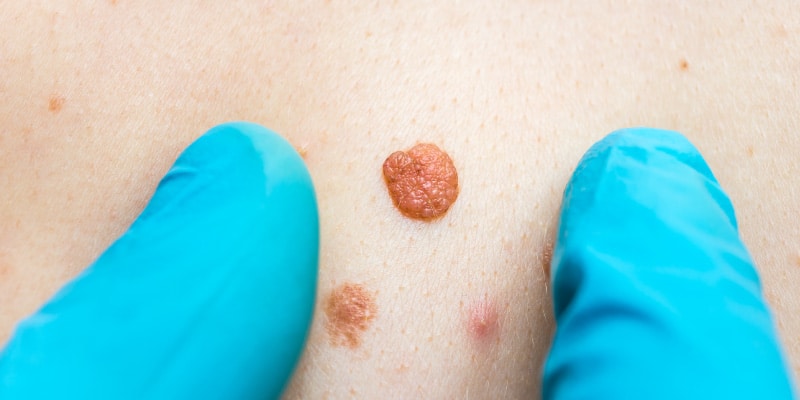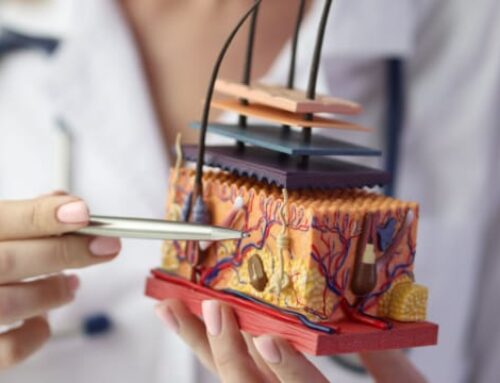The CDC reports that skin cancer is the most common form of cancer in the United States. While treatments for the different types of skin cancer have significantly evolved over recent years, one surgical technique has stood the test of time: Mohs micrographic surgery (MMS).
Developed by Dr. Frederick Mohs in the 1930s, MMS has been embraced over the past decade by an increasing number of surgeons for a variety of skin cancers. Read on to learn exactly what Mohs skin cancer surgery entails and why patients are choosing this surgery.
What is Mohs Skin Cancer Surgery?

Mohs micrographic surgery is a specialized surgical and histopathological technique for the treatment of skin cancer. It involves removing thin layers of cancer-containing skin along with adjacent skin and soft tissue in order to facilitate microscopic examination of the excised tissue. After examination of each layer, maps are created to follow tumor extensions, which allows the surgeon to sequentially excise the tissue until no cancer cells are evident upon microscopic examination. The goal of Mohs surgery is to remove as many skin cancer cells as possible, while doing minimal damage to the surrounding healthy tissue.
Initially, Mohs skin cancer surgery was mainly indicated for basal and squamous cell carcinomas (i.e. nonmelanoma skin cancers). Today, this surgical technique can be used for a variety of other skin cancers, such as melanoma in situ. (J Cutan Aesthet Surg. 2012) The reason why Mohs surgery was rarely chosen to treat melanoma in the past was due to the fear of missing some microscopic melanoma cells that could potentially end up metastasizing (spreading to other organs and tissues in the body).
Efforts have been made to improve the Mohs surgeon’s ability to identify melanoma cells. An example of this is special stains that have been developed to highlight melanoma cells, making them easier to see under a microscope. Thus, more Mohs surgeons are now using this procedure with certain melanomas. However, the treatment of melanoma in situ and malignant melanoma with MMS remains controversial, with world-renown dermatologic surgeons differing in their opinions and recommendations. (Ochsner J. 2003) Nonetheless, there is no debate that MMS is the gold standard for recurrent nonmelanoma skin cancer.

How is Mohs surgery different than standard surgery?
Standard surgery involves making a local excision to remove the visible cancer along with a small margin of surrounding healthy tissue at the same time. Whereas with the Mohs surgical technique, each layer of excised tissue is examined, allowing surgeons to verify that all cancer cells have been removed at the time of surgery. Thus, Mohs surgery reduces the need for additional treatments or additional surgery. Additionally, Mohs surgery decreases the chance of local recurrence.
Mohs skin cancer surgery is typically done on an outpatient basis using a local anesthetic. Recovery time after Mohs skin cancer surgery may take 2 to 4 weeks, depending on the extent of surgery.
Why patients are choosing Mohs Skin Cancer Surgery
The phrase “Better health with the best cosmetic result” has been used to describe Mohs skin cancer surgery. Patients appreciate the tissue-sparing properties of Mohs surgery since they result in less complex and more successful aesthetic reconstructions. (J Cutan Aesthet Surg. 2012) Additionally, the American Society for Dermatologic Surgery reports that Mohs micrographic surgery offers the highest cure rates in the treatment of basal cell and squamous cell cancers of the skin.
While many physicians may perform Mohs surgery, board-certification is not required. However, since Mohs is a very delicate and intricate surgical procedure, there is specialized training offered through the American College of Mohs Surgery (ACMS).
ACMS-approved fellowship training programs are significantly more rigorous than other Mohs programs. During training, fellows are involved with months of extensive, hands-on direction from highly qualified instructors. By choosing a fellowship-trained Mohs surgeon you can be confident that you will receive the highest standard of care and competency as well as an optimal outcome.
New York board-certified dermatologist Dr. Jessica Krant specializes in medical, cosmetic, and surgical dermatology, including Mohs micrographic skin cancer surgery. Having completed formal American College of Mohs Surgery (ACMS) fellowship training, Dr. Krant is now a Fellow of the ACMS. If you are searching for a Mohs skin cancer surgeon, schedule a consultation with Dr. Krant to learn how her expertise can help you win the battle against skin cancer.














Leave A Comment